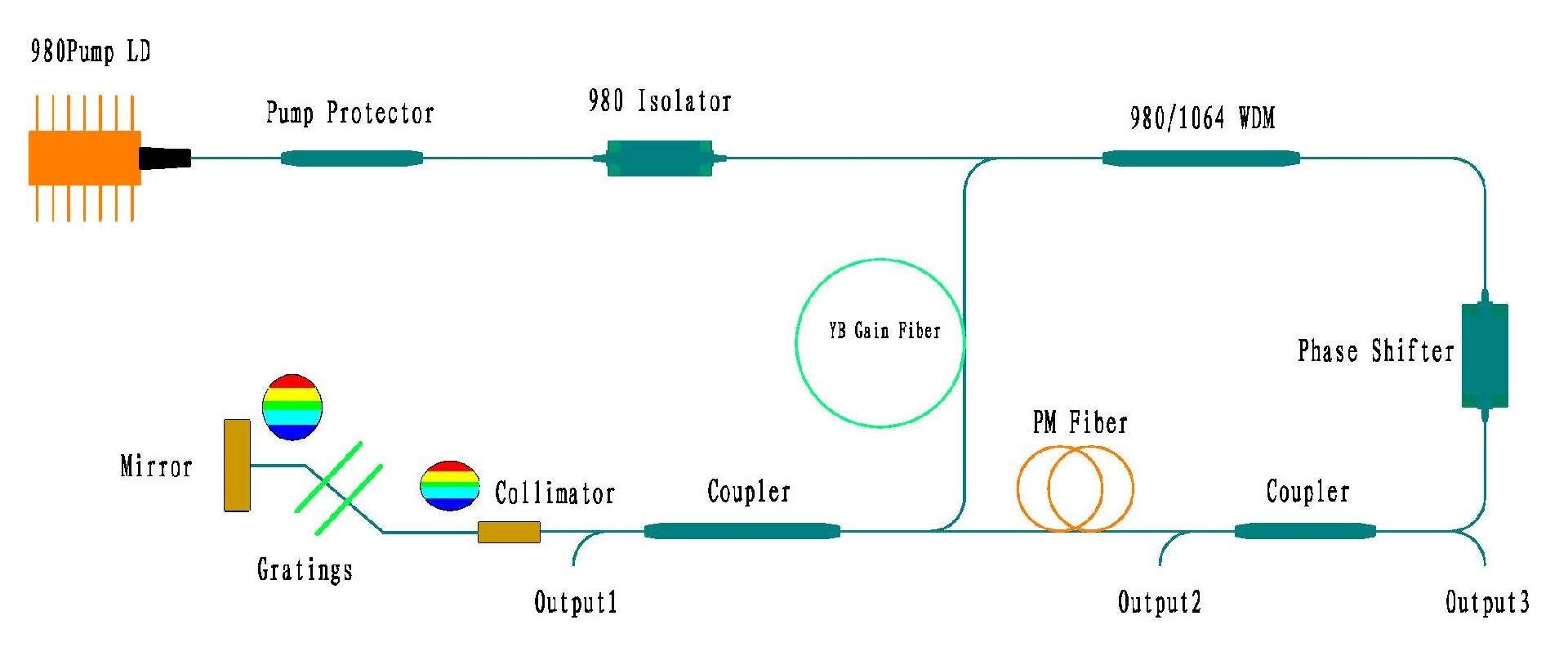Introduction
Ultrafast fiber lasers have gained rapid advances in last decades for their intrinsic merits such as potential of all-fiber format, excellent beam quality, superior power scalability, and high single-pass gain, which opened widespread applications in high-field science, laser machining, precision metrology, optical communication, microscopy and spectroscopy, and modern ophthalmology, to name a few. Performance of an ultrafast fiber laser is well defined by the laser parameters including repetition rate, spectral bandwidth, pulse duration, pulse energy, wavelength tuning range, and average power. During past years, these parameters have been pushed to an unprecedented level. As a result of rapid development in both active and passive fibers, the toolbox of ultrafast fiber lasers will continue to expand and provide solutions to scientific and industrial problems.
Fiber lasers have a number of qualities which make them attractive for ultrashort pulse generation in the picosecond or femtosecond region via active or passive mode locking:
The gain bandwidth of rare-earth-doped fibers is large – typically tens of nanometers – which allows the generation of femtosecond pulses.
The high gain efficiency of active fibers makes it possible to operate such lasers with fairly low pump powers and/or to tolerate intracavity optical elements with relatively high optical losses. For example, certain optical filters or arrangements for dispersion compensation could not be used in bulk lasers.
Fiber laser setups can be fabricated with low cost and can be very compact and rugged – particularly if free-space optics are not used.
Mode-locked fiber lasers can largely be based on telecom components, which have been very carefully developed for reliable long-term operation and have a moderate cost.
The laser output is naturally fiber-coupled (e.g. delivered to a fiber connector) and thus compatible with telecom systems.
With double-clad fibers, there is a potential for high output powers.
On the other hand, the performance of picosecond and femtosecond mode-locked fiber lasers and amplifiers – particularly in terms of pulse energy, peak power and pulse quality – is in many cases severely limited by the strong nonlinearities of fibers, and sometimes also by the chromatic dispersion. Also, there are difficulties for realizing very high pulse repetition rates in the multi-gigahertz region, where one requires harmonic mode locking, which is difficult to optimize for high stability and reliability; most femtosecond fiber lasers work somewhere between 10 MHz and some hundreds of megahertz. Other problems can result from uncontrolled birefringence of fibers, if they are not polarization-maintaining.
There is a large variety of ultrafast fiber lasers, not only emitting at different wavelengths and with different pulse durations and pulse energies, but also exploiting different physical mechanisms of pulse generation. The following sections discuss the most important types of ultrafast fiber lasers.
CSRayzer is specialized in fiber laser optical components and devices design and manufacturing, and one-stop supplying the components to many ulatrafast fiber laser industrial companies, Universities, research institutes, etc.
The following is one of the typical optical system solutions.

Usage and Applications
Medical beauty, Precision manufacturing, Chip processing, Glass cutting, Micro welding, etc.
CSRayzer's Product Range for Ultrafast Fiber Laser Systems
Pump LD
PM WDM (Click for SPECs)
Fiber Optic Coupler (Click for SPECs)
Phase Shifter (Click for SPECs)
PM In-line Fiber Isolator (Click for SPECs)
PM High Power In-Line Isolator (TGG) (Click for SPECs)
PM PatchCord (Click for SPECs)
PM Circulator (Click for SPECs)
Acousto-Optic Modulator (AOM) (Click for SPECs)
High Power Free Space Rotator&Isolator (Click for SPECs)
Fixed Focus Collimator (Click for SPECs)
Pump Signal Combiner (Click for SPECs)
